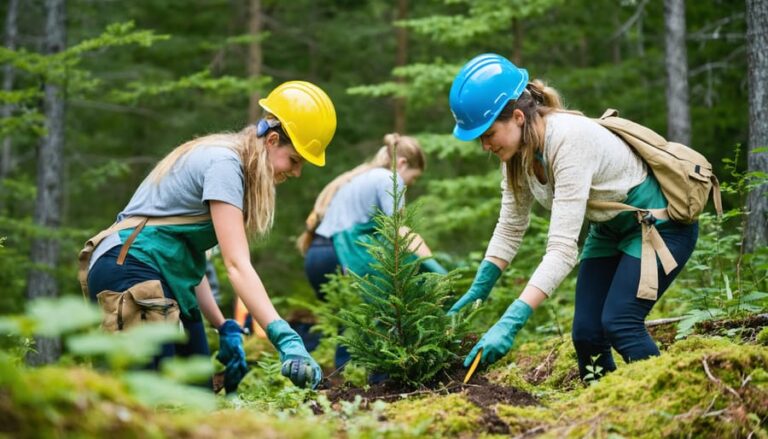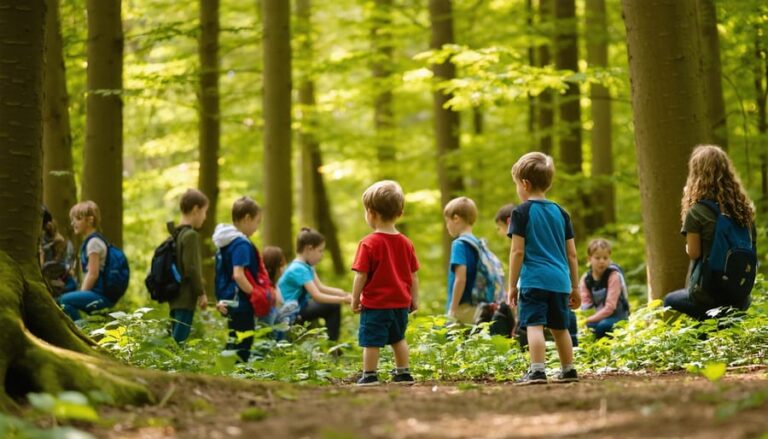Step into a province where the rhythms of powwow drums blend seamlessly with the buzz of modern city life, and where centuries-old maple syrup traditions share space with cutting-edge culinary innovations. Ontario’s cultural landscape is a vibrant tapestry woven from First Nations heritage, European influences, and waves of global immigration that have shaped its identity over generations.
From the bustling streets of Toronto, where over 200 languages echo through diverse neighborhoods, to the tranquil Indigenous sites along the Great Lakes, Ontario’s culture isn’t just something you observe – it’s something you experience. Whether you’re savoring Persian cuisine in Richmond Hill, exploring Franco-Ontarian festivals in Ottawa, or learning traditional crafts in Thunder Bay, each region tells its own unique story of cultural evolution.
What makes Ontario’s cultural scene truly remarkable is its ability to honor tradition while embracing change. Here, ancient Indigenous knowledge guides modern conservation efforts, historic farmers’ markets showcase contemporary food trends, and century-old theaters host groundbreaking performances. This dynamic fusion creates an authentic cultural experience that continues to evolve while remaining deeply rooted in the land and its people.
Welcome to Ontario, where culture isn’t just preserved – it’s lived, shared, and constantly reimagined.
Indigenous Heritage: The Heart of Ontario’s Cultural Identity
Sacred Lands and Traditional Territories
Ontario’s sacred lands tell stories that stretch back thousands of years, deeply rooted in Indigenous heritage and spiritual significance. Places like Petroglyphs Provincial Park, home to the largest known concentration of Indigenous rock carvings in Ontario, offer visitors a chance to connect with ancient wisdom and artistry carved into the limestone.
The Serpent Mounds near Peterborough stand as a testament to the sophisticated burial practices of Indigenous peoples, while the ancient cliff paintings at Agawa Rock in Lake Superior Provincial Park showcase incredible pictographs created by Ojibwe spiritual leaders centuries ago.
Head-Smashed-In Buffalo Jump in Georgian Bay reveals how Indigenous communities sustainably managed resources, while modern-day powwow grounds like those at Cape Croker continue these sacred traditions. When visiting these sites, remember they’re not just tourist attractions but living spiritual spaces deserving utmost respect.
Insider tip: Many Indigenous communities offer guided interpretive walks led by Knowledge Keepers who share traditional stories and teachings. These experiences provide authentic insights while supporting local Indigenous tourism initiatives. Consider visiting during Indigenous Peoples Month in June when many communities host special ceremonies and celebrations open to respectful visitors.
Always follow posted guidelines, never remove artifacts, and ask permission before taking photographs at sacred sites. This helps preserve these irreplaceable cultural treasures for future generations.

Living Traditions and Authentic Experiences
Ontario’s Indigenous communities offer immersive experiences that connect visitors with traditions dating back thousands of years. At the Woodland Cultural Centre in Brantford, knowledge keepers share stories of the Haudenosaunee people through guided tours and hands-on workshops in traditional crafts like beadwork and pottery.
In the Georgian Bay area, Indigenous guides lead medicine walks through ancient forests, teaching visitors about sacred plants and their traditional uses. These intimate experiences often include demonstrations of smudging ceremonies and drum circles, offering meaningful insights into Indigenous spirituality and connection to the land.
The Great Spirit Circle Trail on Manitoulin Island presents authentic cultural programs where visitors can participate in traditional activities like bannock-making, fire-starting, and storytelling around sacred fires. Local elders share oral histories that have been passed down through generations, bringing ancient teachings to life.
For a deeper understanding of Indigenous art, the Thunder Bay Art Gallery showcases contemporary Indigenous artists alongside traditional works. Many pieces tell powerful stories of cultural resilience and renewal. Visitors can often meet artists in residence and participate in workshops exploring traditional techniques with modern interpretations.
Insider tip: Many Indigenous cultural experiences are seasonal and require advance booking. Plan your visit during pow wow season (June to September) to witness vibrant celebrations of dance, music, and community gathering.
Heritage Trails and Historic Sites
Historic Parks and Conservation Areas
Ontario’s historic parks and conservation areas serve as living museums, preserving not just natural landscapes but also the cultural heritage that shaped the province. From the ancient pictographs at Petroglyphs Provincial Park to the historic trading routes of Algonquin Provincial Park, these protected spaces tell stories spanning thousands of years.
Among Ontario’s many hidden cultural gems, you’ll find places like Bruce Peninsula National Park, where Indigenous traditions and European settlement history intertwine along the rugged shores of Georgian Bay. The Niagara Escarpment, designated as a UNESCO World Biosphere Reserve, showcases not only spectacular cliffs but also centuries-old villages and archaeological sites.
Conservation areas like Rouge National Urban Park, Canada’s first national urban park, demonstrate how natural spaces can thrive alongside urban development while preserving cultural landmarks. Here, you can explore working farms that have operated continuously since the 1800s, traditional Indigenous hunting grounds, and historic river portage routes.
Pro tip: Visit these parks during shoulder seasons (spring and fall) for smaller crowds and unique cultural programming. Many parks offer guided heritage walks, traditional craft workshops, and seasonal festivals that celebrate the deep connection between Ontario’s people and its natural spaces. Remember to practice Leave No Trace principles to help preserve these cultural landscapes for future generations.
Urban Heritage Corridors
Ontario’s cities boast vibrant cultural corridors that tell the story of our diverse heritage through architecture, art, and community spaces. In Toronto, the historic Distillery District stands as a testament to Victorian industrial architecture, now transformed into a bustling arts and culture hub where cobblestone streets lead to unique galleries, artisanal shops, and cultural performances.
Walking through Ottawa’s ByWard Market, you’ll experience one of Canada’s oldest and largest public markets, where local vendors have been sharing their goods and stories since 1826. The market neighborhood seamlessly blends historic architecture with modern cultural venues, creating a living museum of Ontario’s urban evolution.
Hamilton’s James Street North has emerged as a cultural renaissance story, with its monthly Art Crawl bringing together local artists, musicians, and food vendors in a celebration of contemporary urban culture. The street’s historic buildings now house indie galleries and multicultural restaurants, reflecting the city’s industrial past and creative present.
In Kingston, the Limestone District showcases some of Ontario’s finest 19th-century architecture, with guided walking tours revealing the stories behind its historic buildings. Local tip: Visit during the summer months when street performers and outdoor exhibitions bring these heritage spaces to life.
These urban corridors not only preserve our architectural heritage but serve as living channels of cultural exchange, where history meets contemporary creativity in uniquely Ontario ways.

Seasonal Cultural Celebrations
Traditional Gatherings and Pow Wows
Throughout Ontario, vibrant Indigenous celebrations known as pow wows bring communities together in a spectacular display of culture, music, and tradition. These gatherings, held primarily during the summer months, showcase the rich heritage of First Nations peoples through traditional dancing, drumming, and singing.
Visitors are warmly welcomed to these family-friendly events, where you can experience the mesmerizing Grand Entry ceremony, watch skilled dancers in colorful regalia compete in various dance categories, and hear the powerful rhythms of traditional drum circles. The celebrations also feature Indigenous artisans selling handcrafted items like beadwork, moccasins, and jewelry.
Food plays a central role in these gatherings, with vendors offering traditional dishes like wild rice, bannock bread, and Three Sisters soup. Many pow wows take place at significant locations across Ontario, from the shores of the Great Lakes to urban centers like Toronto and Thunder Bay.
For the most enriching experience, remember that pow wows are sacred celebrations, not tourist attractions. Show respect by following photography guidelines, standing during ceremonial songs, and asking permission before taking pictures of dancers or ceremonial items.

Modern Cultural Festivals
Ontario’s festival scene bursts with energy throughout the year, showcasing the province’s vibrant multicultural identity. The Toronto International Film Festival (TIFF) draws global attention each September, transforming the city into a star-studded celebration of cinema. Meanwhile, Caribana lights up Toronto’s streets with Caribbean rhythms and colorful costumes, attracting over a million visitors annually.
For music lovers, the Ottawa Bluesfest and Boots and Hearts in Oro-Medonte offer unforgettable local cultural experiences that blend international talent with homegrown artists. The Stratford Festival continues to reinvent itself, mixing classical theatre with contemporary productions that reflect modern Canadian perspectives.
Food festivals like Toronto’s Taste of the Danforth and Ottawa’s Poutinefest celebrate the province’s diverse culinary heritage, while events like the Canadian Tulip Festival in Ottawa and the Winter Light Festival in Niagara Falls add seasonal magic to the cultural calendar. These festivals not only entertain but also help preserve and evolve Ontario’s rich cultural tapestry, creating spaces where tradition meets innovation.
Cultural Tourism Tips and Etiquette
Responsible Tourism Practices
When exploring Ontario’s rich cultural heritage, it’s essential to embrace responsible tourism practices that protect and preserve our diverse communities and natural landscapes for future generations. Start by researching and respecting Indigenous territories you’re visiting, and whenever possible, book experiences through Indigenous-owned businesses and guided tours.
Consider traveling during shoulder seasons to reduce the impact on popular destinations and support local economies year-round. When visiting cultural sites and heritage buildings, follow posted guidelines, stay on marked paths, and avoid touching sensitive artifacts or structures. Photography is often welcome, but always ask permission before taking pictures of people or during ceremonies.
Support local artisans and businesses by purchasing authentic crafts and foods directly from community markets and studios. This helps preserve traditional skills and provides direct economic benefits to cultural communities. Choose accommodations that demonstrate environmental responsibility and engage with local culture respectfully.
When participating in cultural festivals or events, take time to learn about their significance beforehand. Dress appropriately for the occasion, and be mindful of customs and protocols. If you’re unsure about proper etiquette, don’t hesitate to ask local guides or community members – Ontarians are typically happy to share their knowledge with respectful visitors.
Remember to minimize your environmental impact by using reusable water bottles, following waste sorting guidelines, and choosing eco-friendly transportation options when possible. Share your positive experiences with others, but avoid geotagging sensitive cultural sites that could be impacted by overtourism.
Planning Your Cultural Heritage Visit
Planning a cultural heritage visit in Ontario requires a bit of preparation to make the most of your experience. Start by deciding which aspects of Ontario’s rich cultural tapestry interest you most – whether it’s Indigenous heritage sites, historic settlements, or modern multicultural celebrations. Download the Ontario adventure map to get a better sense of cultural destinations across the province.
Consider timing your visit around major cultural festivals and events, such as the Stratford Festival for theater lovers or the Canadian National Exhibition for a taste of local traditions. Many heritage sites operate seasonally, so check operating hours and book tickets in advance, especially during peak summer months.
For authentic experiences, try combining different cultural elements in your itinerary. For instance, pair a visit to a historic site with a stop at a local farmers’ market or indigenous craft workshop. Many communities offer guided cultural tours led by local experts who can provide deeper insights into the area’s heritage.
Pack appropriately for your cultural adventures. Comfortable walking shoes are essential for exploring historic districts, and don’t forget your camera to capture memorable moments. Some heritage sites and Indigenous territories may have specific dress codes or customs to respect, so research these beforehand.
Consider staying in historic inns or B&Bs to immerse yourself in local culture. Many offer unique experiences like traditional cooking classes or storytelling sessions. Finally, support local artisans and cultural practitioners by purchasing authentic crafts and participating in workshops – it’s a wonderful way to take a piece of Ontario’s culture home with you.
Cultural heritage tourism in Ontario stands as a vital bridge connecting visitors to the rich tapestry of our province’s past, present, and future. By exploring our diverse cultural attractions, from indigenous heritage sites to vibrant urban festivals, travelers not only enrich their own understanding but also contribute to the preservation and celebration of Ontario’s unique identity.
The economic impact of cultural tourism cannot be understated, as it supports local artisans, maintains historical sites, and keeps traditional practices alive for future generations. More importantly, it creates meaningful connections between visitors and communities, fostering mutual understanding and respect across different cultural backgrounds.
As we look to the future, sustainable cultural tourism practices are becoming increasingly important. Many Ontario destinations are now embracing eco-friendly initiatives while ensuring that cultural experiences remain authentic and respectful to local communities. This balance between preservation and accessibility ensures that our cultural heritage remains vibrant and relevant.
Whether you’re exploring a small-town museum, participating in a traditional pow wow, or sampling diverse cuisines in Toronto’s multicultural neighborhoods, each experience adds to Ontario’s continuing cultural story. We encourage visitors to approach these cultural experiences with curiosity and respect, taking the time to learn, engage, and create lasting memories while supporting the communities that make Ontario truly special.
By choosing to explore Ontario’s cultural heritage, you’re not just planning a vacation – you’re participating in the ongoing celebration and preservation of our province’s diverse cultural landscape.














+ There are no comments
Add yours